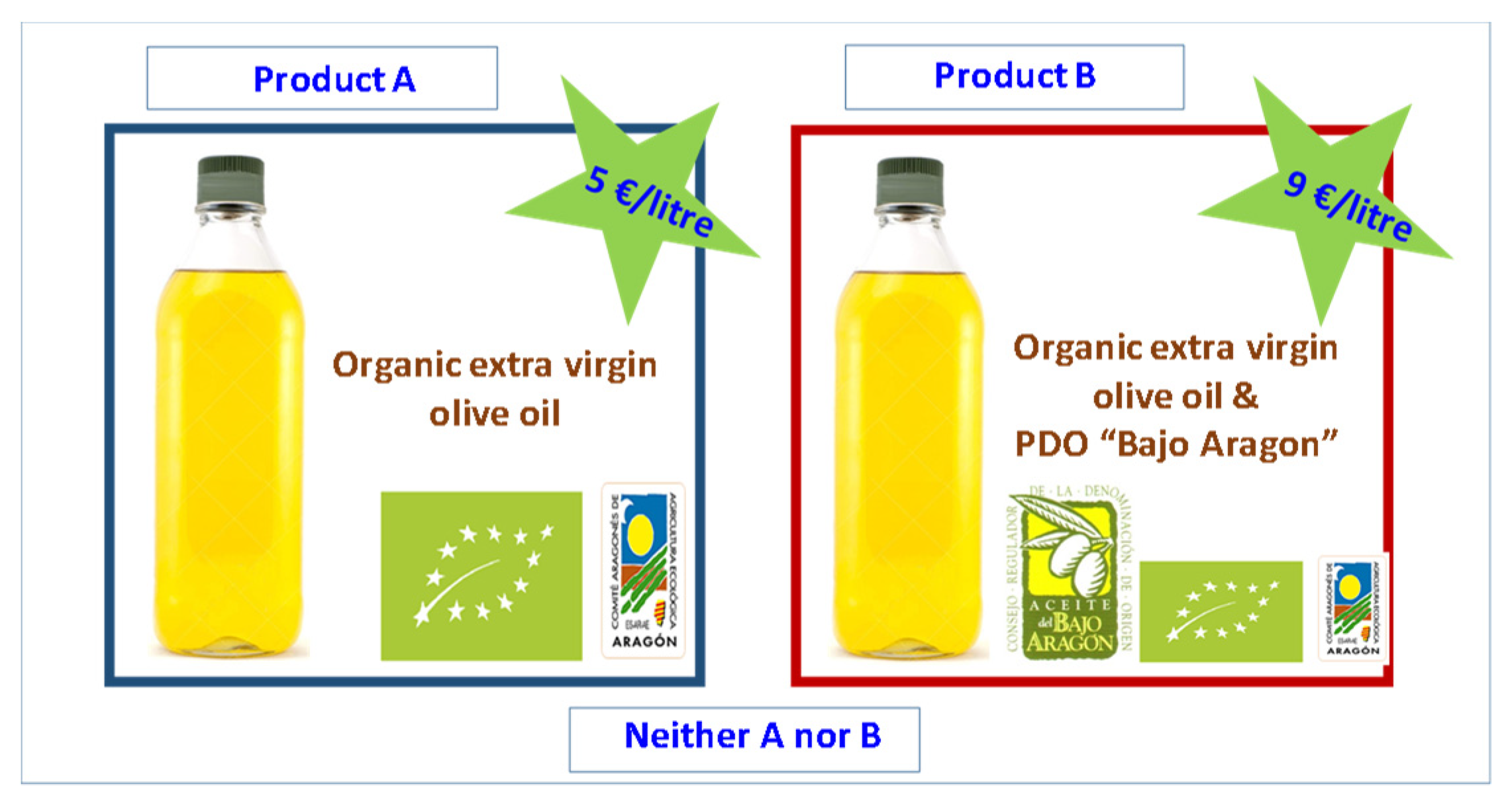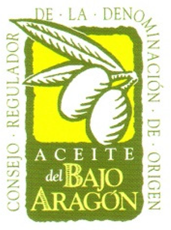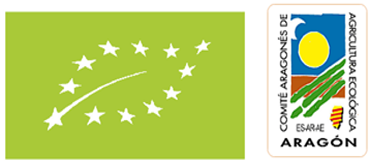Not Seeing the Forest for the Trees: The Impact of Multiple Labelling on Consumer Choices for Olive Oil
Abstract
1. Introduction
2. Materials and Methods
2.1. Data Collection
2.2. Choice Experiment Design
2.3. Specification and Estimation
3. Results and Discussions
3.1. Sample Descriptive Statistics
3.2. Estimation Results
4. Conclusions
Author Contributions
Funding
Acknowledgments
Conflicts of Interest
References
- European Union. Regulation (EU) No 1151/2012 of the European Parliament and of the Council of 21 November 2012 on Quality Schemes for Agricultural Products and Foodstuffs. 2012. Available online: http://data.europa.eu/eli/reg/2012/1151/oj (accessed on 4 September 2019).
- European Union. Regulation (EU) No 2018/848 of the European Parliament and of the Council of 30 May 2018 on Organic Production and Labelling of Organic Products and Repealing Council Regulation (EC) No 834/2007. 2018. Available online: http://data.europa.eu/eli/reg/2018/848/oj (accessed on 4 September 2019).
- European Economic Community. Council Regulation (EEC) No 1601/91 of 10 June 1991 Laying down General Rules on the Definition, Description and Presentation of Aromatized Wines, Aromatized Wine-Based Drinks and Aromatized Wine-Product Cocktails. 1991. Available online: https://eur-lex.europa.eu/legal-content/EN/TXT/?uri=uriserv:OJ.L_.1991.149.01.0001.01.ENG&toc=OJ:L:1991:149:TOC (accessed on 1 October 2019).
- European Council. Council Directive 2001/110/EC of 20 December 2001 Relating to Honey. 2001. Available online: https://eur-lex.europa.eu/legal-content/EN/ALL/?uri=CELEX%3A32001L0110 (accessed on 1 October 2019).
- European Council. Regulation (EC) No 509/2006 of 20 March 2006 on Agricultural Products and Foodstuffs as Traditional Specialities Guaranteed. 2006. Available online: https://eur-lex.europa.eu/legal-content/en/ALL/?uri=CELEX%3A32006R0509 (accessed on 4 September 2019).
- European Council. Council Regulation (EC) No 510/2006 of 20 March 2006 on the Protection of Geographical Indications and Designations of Origin for Agricultural Products and Foodstuffs. 2006. Available online: https://eur-lex.europa.eu/legal-content/EN/TXT/?uri=uriserv:OJ.L_.2006.093.01.0012.01.ENG&toc=OJ:L:2006:093:TOC (accessed on 4 September 2019).
- European Commission—Agriculture and Rural Development—Agriculture and Food—Designations of Origin (DOOR). 2020. Available online: https://ec.europa.eu/agriculture/quality/door/list.html (accessed on 4 September 2019).
- Ministerio de Agricultura, Pesca y Alimentación, (MAPA). Calidad Diferenciada. 2019. Available online: https://www.mapa.gob.es/es/alimentacion/temas/calidad-agroalimentaria/calidad-diferenciada/ (accessed on 10 December 2019).
- Grunert, K.G.; Aachmann, K. Consumer reactions to the use of EU quality labels on food products: A review of the literature. Food Control 2016, 59, 178–187. [Google Scholar] [CrossRef]
- Van der Lans, I.A.; van Ittersum, K.; De Cicco, A.; Loseby, M. The role of the region of origin and EU certificates of origin in consumer evaluation of food products. Eur. Rev. Agric. Econ. 2001, 28, 451–477. [Google Scholar] [CrossRef]
- Erraach, Y.; Sayadi, S.; Gómez, A.C.; Parra-López, C. Consumer-stated preferences towards Protected Designation of Origin (PDO) labels in a traditional olive-oil-producing country: The case of Spain. New Medit 2014, 13, 11–19. [Google Scholar]
- Del Giudice, T.; Cavallo, C.; Caracciolo, F.; Cicia, G. What attributes of extra virgin olive oil are really important for consumers: A meta-analysis of consumers’ stated preferences. Agric. Econ. 2015, 3, 20. [Google Scholar] [CrossRef]
- Erraach, Y.; Sayadi, S.; Parra-López, C. Exploring consumers’ purchasing intention towards labelled olive oil: An application of the theory of planned behaviour. In Proceedings of the Contribution Presented at the XV EAAE Congress, Parma, Italy, 29 August–1 September 2017. [Google Scholar]
- Ballco, P.; Gracia, A. An extended approach combining sensory and real choice experiments to examine new product attributes. Food Qual. Prefer. 2020, 80, 103830. [Google Scholar] [CrossRef]
- Bernabéu, R.; Díaz, M. Preference for olive oil consumption in the Spanish local market. Span. J. Agric. Res. 2016, 14, e0108. [Google Scholar] [CrossRef]
- Giannoccaro, G.; Carlucci, D.; Sardaro, R.; Roselli, L.; De Gennaro, B.C. Assessing consumer preferences for organic vs eco-labelled olive oils. Org. Agric. 2019, 1–12. [Google Scholar] [CrossRef]
- Aprile, M.C.; Caputo, V.; Nayga, R.M., Jr. Consumers’ valuation of food quality labels: The case of the European geographic indication and organic farming labels. Int. J. Consum. Stud. 2012, 36, 158–165. [Google Scholar] [CrossRef]
- Boncinelli, F.; Contini, C.; Romano, C.; Scozzafava, G.; Casini, L. Territory, environment, and healthiness in traditional food choices: Insights into consumer heterogeneity. Int. Food Agribus. Manag. Rev. 2017, 20, 143–157. [Google Scholar] [CrossRef]
- Menapace, L.; Colson, G.; Grebitus, C.; Facendola, M. Consumers’ preferences for geographical origin labels: Evidence from the Canadian olive oil market. Eur. Rev. Agric. Econ. 2011, 38, 193–212. [Google Scholar] [CrossRef]
- Panico, T.; Del Giudice, T.; Caracciolo, F. Quality dimensions and consumer preferences: A choice experiment in the Italian extra-virgin olive oil market. Agric. Econ. Rev. 2014, 15, 253685. [Google Scholar] [CrossRef]
- Tempesta, T.; Vecchiato, D. Analysis of the factors that influence olive oil demand in the Veneto Region (Italy). Agriculture 2019, 9, 154. [Google Scholar] [CrossRef]
- Yangui, A.; Costa-Font, M.; Gil, J.M. Revealing additional preference heterogeneity with an extended random parameter logit model: The case of extra virgin olive oil. Span. J. Agric. Res. 2014, 3, 553–567. [Google Scholar] [CrossRef]
- Yangui, A.; Costa-Font, M.; Gil, J.M. The effect of personality traits on consumers’ preferences for extra virgin olive oil. Food. Qual. Prefer. 2016, 51, 27–38. [Google Scholar] [CrossRef]
- Yangui, A.; Gil, J.M.; Costa-Font, M. Comportamiento de los consumidores españoles y los factores determinantes de sus disposiciones a pagar hacia el aceite de oliva ecológico. Inf. Tec. Econ. Agrar. 2019, 115, 252–269. [Google Scholar] [CrossRef]
- Instituto Aragonés de Estadística (IAEST). Datos Básicos de Aragón. Provincia de Teruel, 2017. Available online: http://www.aragon.es/iaest (accessed on 16 July 2019).
- Organisation for Economic Co-operation and Development (OECD). Territorial Reviews: Teruel, Spain; OECD Publishing: Paris, France, 2001. [Google Scholar] [CrossRef]
- McFadden, D. Conditional logit analysis of qualitative choice behavior. In Frontiers in Econometrics; Zarembka, P., Ed.; Academic Press: New York, NY, USA, 1974; pp. 105–142. [Google Scholar]
- Adamowicz, W.; Boxall, P.; Williams, M.; Louviere, J. Stated preference approaches for measuring passive use values: Choice experiments and contingent valuation. Am. J. Agric. Econ. 1998, 80, 64–75. [Google Scholar] [CrossRef]
- Cummings, R.G.; Taylor, L.O. Unbiases value estimates for environmental goods: A cheap talk design for the contingent valuation method. Am. Econ. Rev. 1999, 89, 649–665. [Google Scholar] [CrossRef]
- Street, D.; Burgess, L. The Construction of Optimal Stated Choice Experiments; John Wiley & Sons Inc.: Hoboken, NJ, USA, 2007. [Google Scholar]
- Street, D.J.; Burgess, L.; Louviere, J.J. Quick and easy choice sets: Constructing optimal and nearly optimal stated choice experiments. Int. J. Res. Mark. 2005, 22, 459–470. [Google Scholar] [CrossRef]
- Johnson, F.R.; Lancsar, E.; Marshall, D.; Kilambi, V.; Mühlbacher, A.; Regier, D.A.; Brian, W.; Bresnahan, B.W.; Kanninen, B.; Bridges, J.F. Constructing experimental designs for discrete-choice experiments: Report of the ISPOR conjoint analysis experimental design good research practices task force. Value Health 2013, 16, 3–13. [Google Scholar] [CrossRef]
- Lancaster, K. A new approach to consumer theory. J. Polit. Econ. 1966, 74, 132–157. [Google Scholar] [CrossRef]
- Hynes, S.; Hanley, N.; Scarpa, R. Effects on welfare measures of alternative means of accounting for preference heterogeneity in recreational demand models. Am. J. Agr. Econ. 2008, 90, 1011–1027. [Google Scholar] [CrossRef]
- Scarpa, R.; Campbell, D.; Hutchinson, G. Benefit estimates for landscape improvements: Sequential Bayesian design and respondents rationality in a choice experiment. Land Econ. 2007, 83, 617–634. [Google Scholar] [CrossRef]
- Campbell, D. Willingness to pay for rural landscape improvements: Combining mixed logit and random effects models. J. Agric. Econ. 2007, 58, 467–483. [Google Scholar] [CrossRef]
- Scarpa, R.; Del Giudice, T. Market segmentation via mixed logit: Extra-virgin olive oil in urban Italy. J. Agric. Food Ind. Organ. 2004, 2. [Google Scholar] [CrossRef]
- Train, K. Discrete Choice Methods with Simulation; Cambridge University Press: Cambridge, UK, 2003. [Google Scholar]
- Gracia, A.; Barreiro-Hurlé, J.; Galán, B.L. Are local and organic claims complements or substitutes? A consumer preferences study for eggs. J. Agric. Econ. 2014, 65, 49–67. [Google Scholar] [CrossRef]
- Chang, J.B.; Moon, W.; Balasubramanian, A.K. Consumer valuation of health attributes for soy-based food: A choice modeling approach. Food Policy 2012, 37, 335–342. [Google Scholar] [CrossRef]
- Merritt, M.G.; Delong, K.L.; Griffith, A.P.; Jensen, K.L. Consumer willingness to pay for Tennessee certified beef. J. Agric. Appl. Econ. 2018, 50, 233–254. [Google Scholar] [CrossRef]
- Verhoef, P.C. Explaining purchases of organic meat by Dutch consumers. Eur. Rev. Agric. Econ. 2005, 32, 245–267. [Google Scholar] [CrossRef]
- Hensher, D.A.; Rose, J.M.; Greene, W.H. Applied Choice Analysis: A Primer; Cambridge University Press: Cambridge, UK, 2016. [Google Scholar]
- Schulze-Ehlers, B.; Purwins, N. Does having a Choice make a Difference? Market Potential of the Animal Welfare Label in Germany. In Proceedings of the 2016 International European Forum (151st EAAE Seminar), Innsbruck-Igls, Austria, 15–19 February 2016. [Google Scholar]
- Meas, T.; Hu, W.; Batte, M.T.; Woods, T.A.; Ernst, S. Substitutes or complements? Consumer preference for local and organic food attributes. Am. J. Agric. Econ. 2014, 97, 1044–1071. [Google Scholar] [CrossRef]
- Onozaka, Y.; McFadden, D.T. Does local labeling complement or compete with other sustainable labels? A conjoint analysis of direct and joint values for fresh produce claim. Am. J. Agric. Econ. 2011, 93, 693–706. [Google Scholar] [CrossRef]
- Hair, J.F.; Anderson, R.E.; Tathan, R.L.; Black, W.C. Multivariate Data Analysis; Prentice-Hall International: Bergen County, NJ, USA, 1998. [Google Scholar]
- Yue, C.; Tong, C. Organic or local? Investigating consumer preference for fresh produce using a choice experiment with real economic incentives. HortScience 2009, 44, 366–371. [Google Scholar] [CrossRef]

| Attribute | Level | Visual Logo |
|---|---|---|
| Price (€/L) | 3 €/L 5 €/L 7 €/L 9 €/L | Price per liter tag |
| Geographic origin “Aceite del Bajo Aragón” | Presence Absence |  |
| Organic production | Presence Absence |  |
| Variable | Definition | Sample | Aragon | Spain |
|---|---|---|---|---|
| Gender | Female (dummy) (%) | 65.1 | 50.3 | 50.8 |
| Age (sample average) | Age (continuous) | 48.9 | 43.9 | 42.1 |
| Household size (average) | Number of people | 2.8 | 2.5 | 2.5 |
| Household monthly per capita income | Income (Above sample average) (%) | 46.4 | n.d. | n.d. |
| Highest level of education achieved | Primary studies (%) | 14.4 | 27.2 | 25.5 |
| Secondary studies (%) | 29.8 | 46.1 | 46.3 | |
| University degree (%) | 55.7 | 26.6 | 28.1 |
| MNL | RPL | ECRPL | |
|---|---|---|---|
| Mean Values | |||
| α | 3.2314 (36.07) *** | 4.098 (34.53) *** | 5.4675 (29.70) *** |
| PRICE | −0.4919 (−37.10) *** | −0.6216 (−34.49) *** | −0.6634 (−52.11) *** |
| PDO | 0.9442 (11.89) *** | 1.2636 (11.68) *** | 1.3111 (11.43) *** |
| ORG | 0.5815 (8.86) *** | 0.6537 (6.77) *** | 0.6819 (6.73) *** |
| PDO*ORG | −0.2947 (−3.50) *** | −0.2874 (−2.92) *** | −0.2501 (−1.99) *** |
| Standard deviations of parameter distributions | |||
| PDO | – | 1.3480 (13.75) *** | 1.4103 (8.87) *** |
| ORG | – | 1.4200 (16.41) *** | 1.2713 (11.57) *** |
| PDO*ORG | – | 0.0555 (0.33) | 0.4490 (2.96) *** |
| Diagonal values in Cholesky matrix | |||
| PDO | – | – | 1.4103 (8.87) *** |
| ORG | – | – | 1.0757 (9.88) *** |
| PDO*ORG | – | – | 0.0011 (0.00) |
| Standard deviation of the latent random effect | |||
| σε | – | 2.4062 (13.87) *** | |
| N | 4320 | 4320 | 4320 |
| Log-likelihood at convergence | −3238.1 | −3018.0 | −2802.3 |
| Adjusted Pseudo R2 | 0.25 | 0.36 | 0.41 |
| Importance Score | Marginal WTP Main Effects | Marginal WTP Total: Main and Interaction Effects | |
|---|---|---|---|
| PRICE | 64.0 | ||
| PDO | 20.9 | 1.9765 *** | |
| ORG | 10.9 | 1.0275 *** | |
| PDO*ORG | 4.2 | −0.3770 *** | 2.6 |
| Characteristics | Complement Label | Substitute Labels | Total Sample |
|---|---|---|---|
| Proportion of respondents in the segments | 12% | 88% | |
| Highest level of education achieved* | |||
| Primary | 17.9 | 13.4 | 14.4 |
| Secondary | 19.4 | 31.3 | 29.8 |
| University | 62.7 | 54.7 | 55.7 |
| Household monthly income (average) ** | 2284 | 2570 | 2534 |
| Household size (average) ** | 2.6 | 2.9 | 2.8 |
| Frequency of food purchase* | |||
| Always | 58.2 | 45.0 | 46.7 |
| Often | 25.4 | 34.3 | 33.1 |
| Sometimes | 16.4 | 16.3 | 16.3 |
| Hardly never | 0.0 | 4.4 | 3.9 |
| Importance attached when shopping olive oil to: | |||
| Organic production ** | 2.8 | 2.4 | 2.5 |
| Taste * | 4.3 | 4.1 | 4.2 |
| Purchases EVOO with PDO label at least sometimes * (%)—Yes | 68.7 | 77.6 | 76.5 |
| Purchase organic EVOO at least sometimes * (%)—Yes | 68.7 | 76.3 | 75.4 |
| Intention to purchase EVOO with the PDO “Aceite del Bajo Aragón” | |||
| Yes and likely yes | 68.7 | 79.3 | 77.9 |
| I do not know | 22.4 | 15.9 | 16.7 |
| No and likely no | 8.9 | 4.9 | 5.4 |
| Importance attached when shopping EVOO to: | |||
| Taste | 4.0 | 4.2 | 4.2 |
| Variety (Empeltre) | 3.4 | 3.1 | 3.1 |
| Type of bottle (plastic, glass, etc.) | 3.2 | 2.9 | 2.9 |
© 2020 by the authors. Licensee MDPI, Basel, Switzerland. This article is an open access article distributed under the terms and conditions of the Creative Commons Attribution (CC BY) license (http://creativecommons.org/licenses/by/4.0/).
Share and Cite
Pérez y Pérez, L.; Gracia, A.; Barreiro-Hurlé, J. Not Seeing the Forest for the Trees: The Impact of Multiple Labelling on Consumer Choices for Olive Oil. Foods 2020, 9, 186. https://doi.org/10.3390/foods9020186
Pérez y Pérez L, Gracia A, Barreiro-Hurlé J. Not Seeing the Forest for the Trees: The Impact of Multiple Labelling on Consumer Choices for Olive Oil. Foods. 2020; 9(2):186. https://doi.org/10.3390/foods9020186
Chicago/Turabian StylePérez y Pérez, Luis, Azucena Gracia, and Jesús Barreiro-Hurlé. 2020. "Not Seeing the Forest for the Trees: The Impact of Multiple Labelling on Consumer Choices for Olive Oil" Foods 9, no. 2: 186. https://doi.org/10.3390/foods9020186
APA StylePérez y Pérez, L., Gracia, A., & Barreiro-Hurlé, J. (2020). Not Seeing the Forest for the Trees: The Impact of Multiple Labelling on Consumer Choices for Olive Oil. Foods, 9(2), 186. https://doi.org/10.3390/foods9020186






